Connectivity in an Ancient Landscape: Nature Reserve
“There is nothing exceptional in what I am doing here. It is only what every farmer or landowner could and should be doing to improve our biodiversity and our landscapes,” Ross Gray.
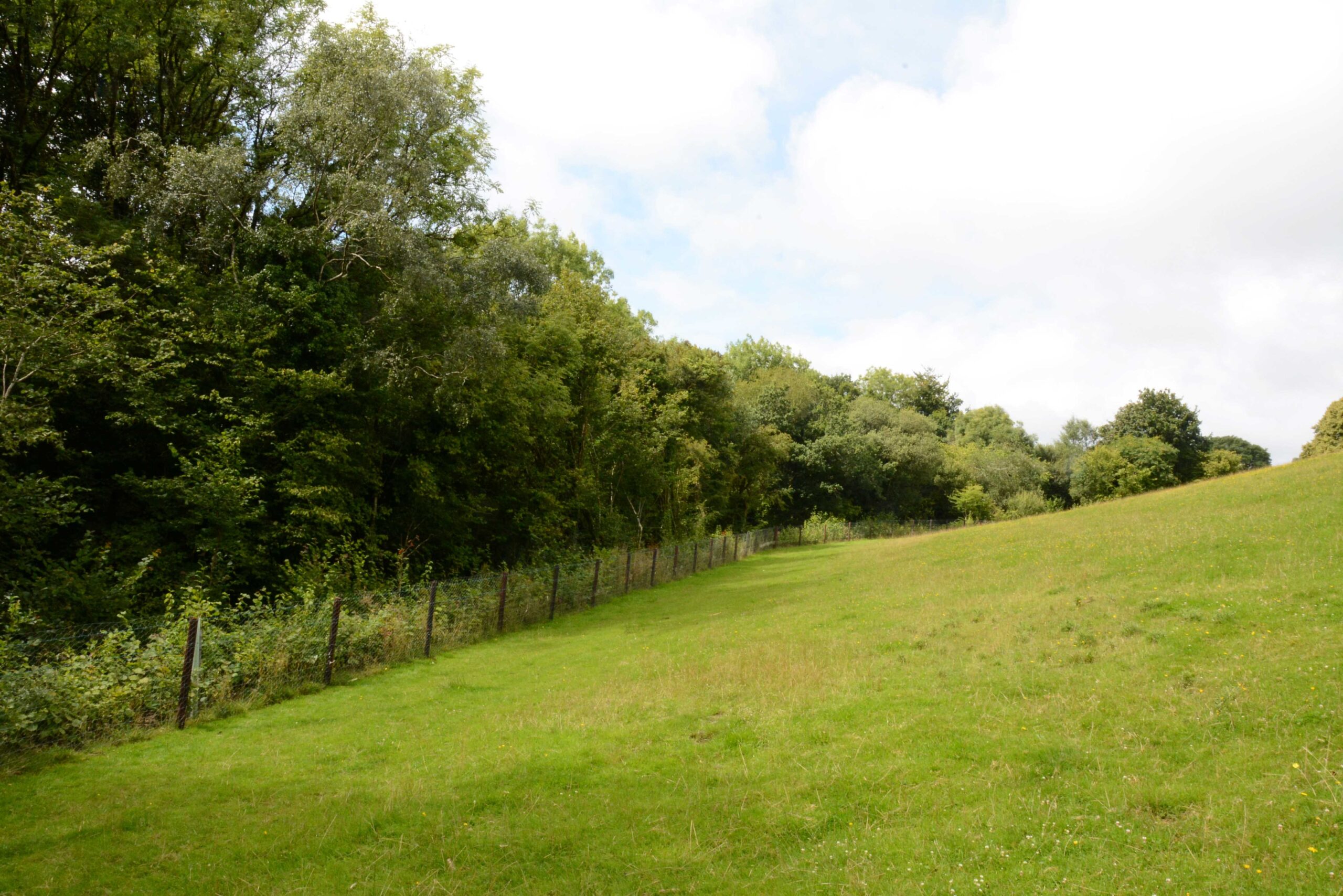
Above: Priddons Nature Reserve is surrounded by steep sloping fields in an ancient landscape
Priddon’s Nature Reserve is within the Dartmoor National Park, an area still shaped by ancient Bronze Age and Medieval field boundaries.
Ross is an award-winning master hedgelayer, and one of the longest serving tree wardens in the country. He used to own and farm the land immediately adjacent to the small nature reserve. The farm is now owned and worked by one of his sons, with Ross retaining ownership and access to the Nature Reserve.
His project was to plant a double row hedge along the length of a 150 meter (490feet) long boundary. Grants for Resilient Woodlands have helped with the cost of more than 900 trees and shrubs.
His primary aims were to improve local biodiversity and connect to other ancient field boundaries. As it grows, the hedge will also help slow the flow of rain and agricultural run off into the Priddons Stream, a tributary of the River Dart. In time, Ross hopes to plant more hedges along other boundaries to the reserve.
The Site
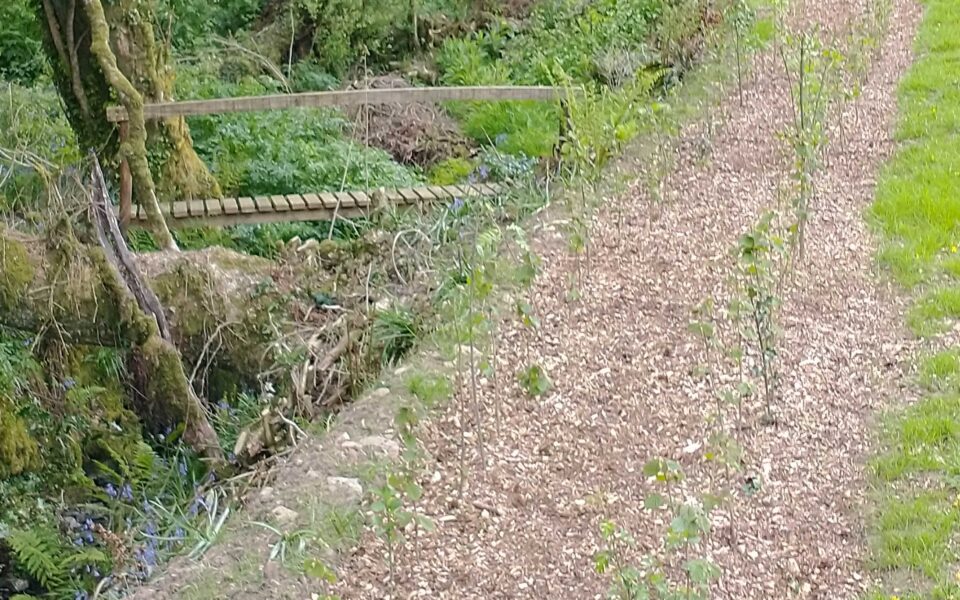
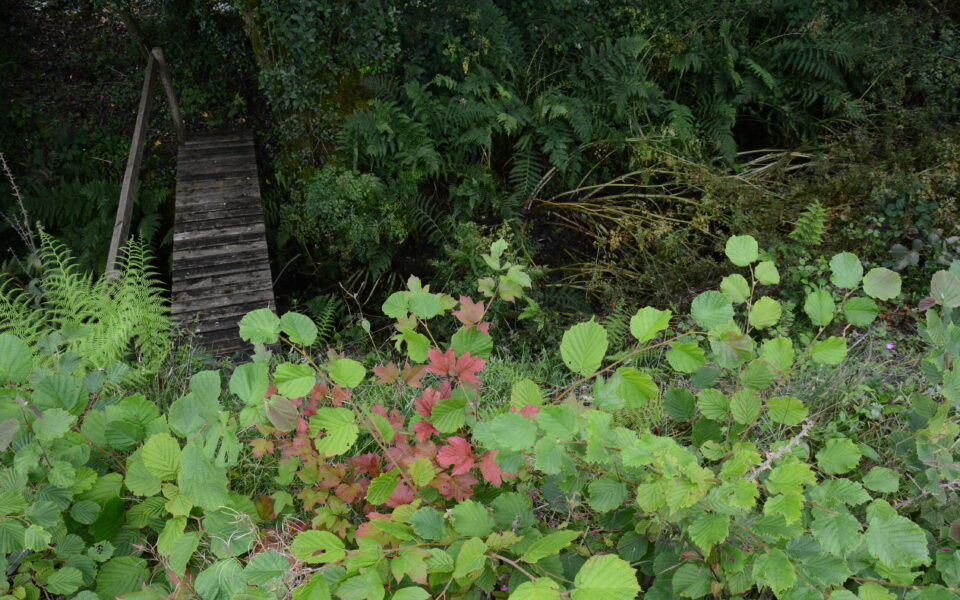
Above: Left: the lip along the streamside edge of the new hedge edge can be seen. This helps further slow, filter and absorb run off. Right: how the hedge has flourished in its first year
The nature reserve is in a sheltered valley bottom 260 meters (850 feet) above sea level. It is close to Holne Moor, adjoining the National Trust Holne Wood and steep pastureland. It is a 0.5ha area of rocky ravine, wood and wetland.
Priddons Nature Reserve was enclosed properly in 1980 with long fenced boundaries which are now 43 years old and needing replacement with permanent and sustainable hedges.
It is at a point where four adjoining pasture fields slope steeply towards Priddons Stream which runs through the reserve. On one side is a steep floodwater ravine. On the other side, rock and soil was bulldozed from the surrounding field to form the field boundaries to the nature reserve
Within the reserve are 40-150 years old mixed broadleaf – lime, oak, ash, beech, birch, sallow, hazel, hawthorn, blackthorn, rowan, holly, Devon whitebeam, with dog rose, honeysuckle and ivy. A public footpath runs through part of the site.
For Ross it has always been important that hedges are seen as nature-friendly linear woodland, providing multiple benefits in the landscape. These benefits can include enclosure for farm animals, firewood for the home, habitat and food for local invertebrates, mammal and bird species and sequestering carbon. Priddons Nature Reserve’s location means the hedge can also contribute to water/flood management in the area and retention of soil.
Species Choice
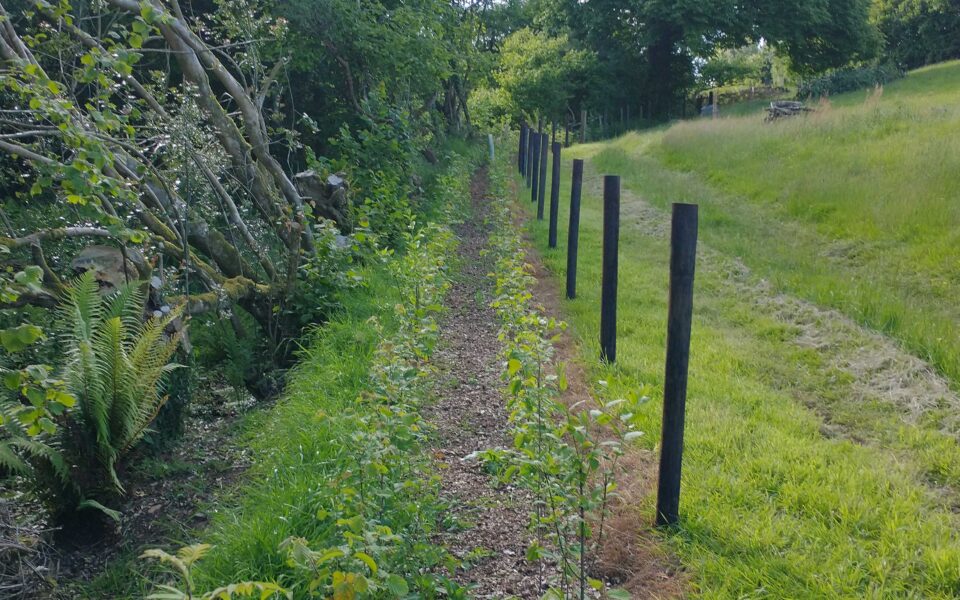
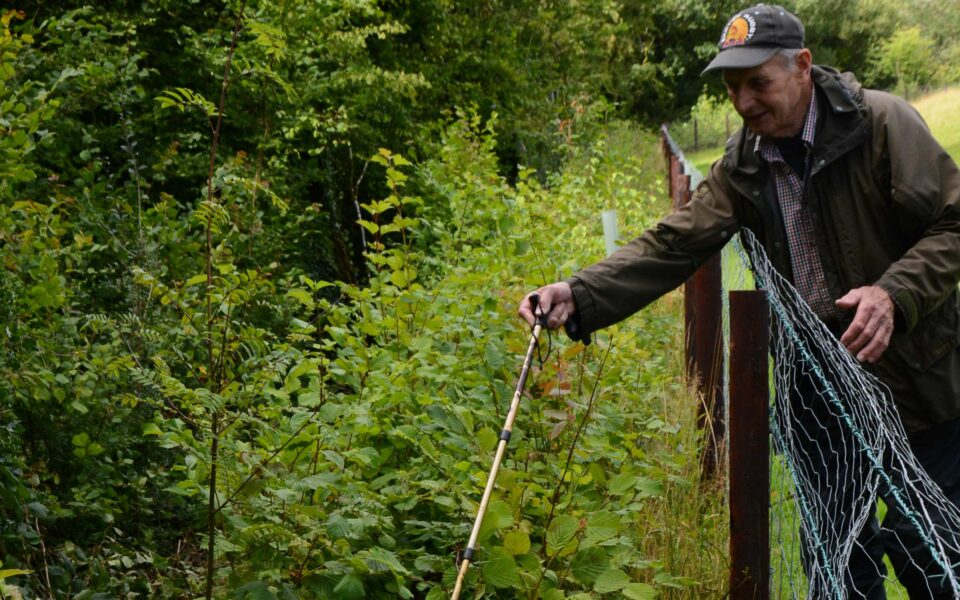
Above: Left: looking west after planting and mulching. Right: one year on and there is a 99% take
Ross drew inspiration from the surrounding fields and hedgerows, choosing species which grow readily in the slightly acidic soils.
The species have also been chosen for their ability in the future to become a traditionally laid hedge and to sustain local biodiversity. Dormice are present in the surrounding area and berry loving fieldfares and redwings are regular Autumn visitors.
By incorporating 13 different tree and shrub species, Ross is building in resilience to his young hedgerow from pests and diseases. Should one species fail, there will be 12 more to carry on.
Most species were obtained as whips from Perrie Hale Nursery, Honiton, with strict instructions for them to be indigenous UK stock and, where possible, from local seed. Wild cherry came from Devon Wildlife Trust. Field maple which grows well locally can suppress other species. It was therefore limited to just two in the hedgerow, with blackthorn grown on site.
The following were planted in early spring 2022:
600 hazel 50 hawthorn
50 blackthorn 50 holly
50 rowan 50 dogwood
50 spindle 50 guelder rose
10 dog rose 2 wild cherry
2 field maple
In addition: 15 field rose and 5 crab apple have been added. There has also been some regenerative growth of previous coppiced wood edge species, especially blackthorn and hazel.
Planting
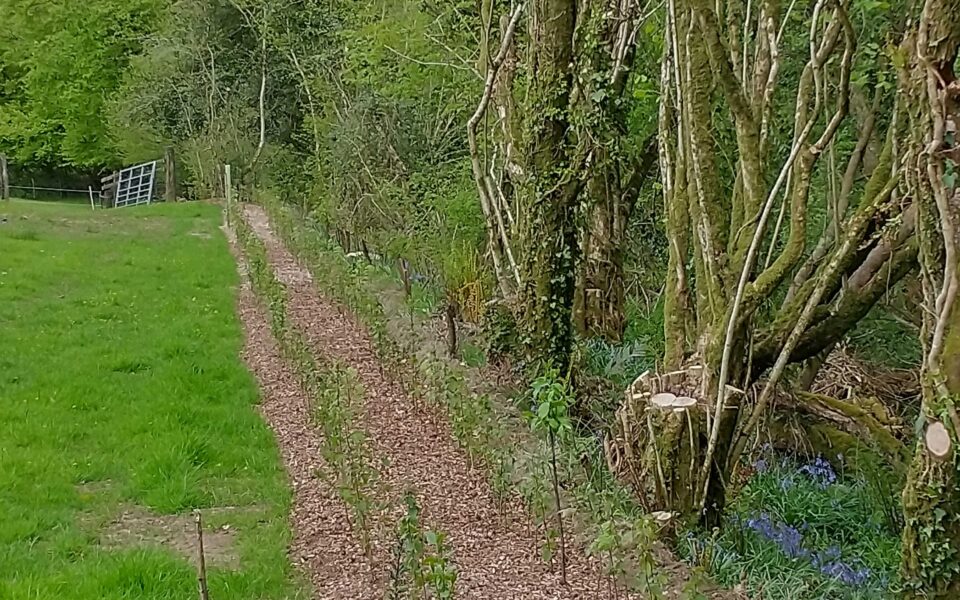
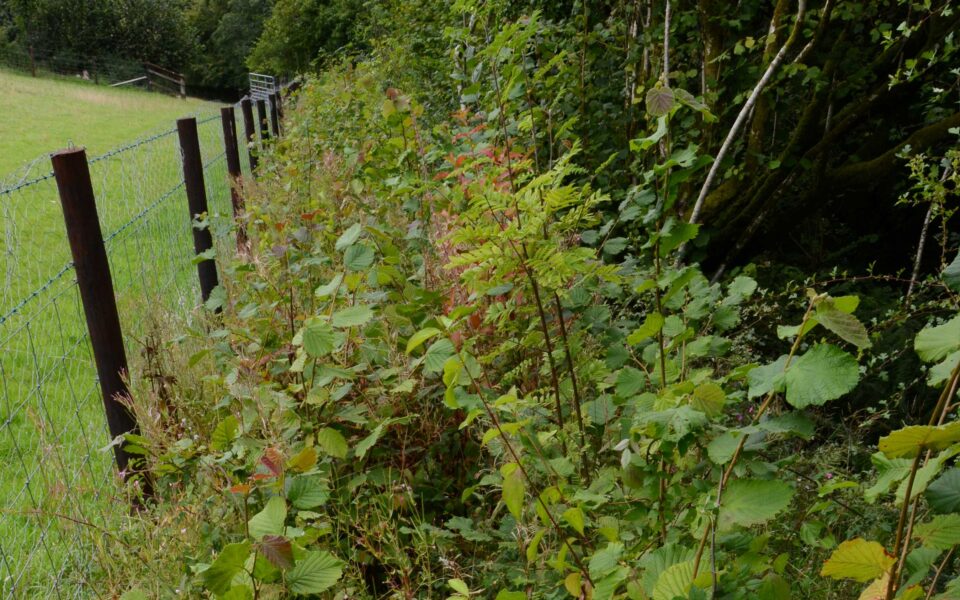
Above: Left: Looking east, species choice was inspired by trees and hedgerows in the surrounding areas. Right: a year on, the new hedgerow helping to connect with existing landscape
Before planting could take place the old fence line was very carefully sprayed with weedkiller to release the netting from the grip of nettles and grass. Ross then invested time and energy with the help of contractors and friends to remove what had become a degraded tree and shrub edge to the nature reserve and field. Challenges included clearing large fallen willows.
Because of the rocky and root-bound nature of the boundary line, a digger formed two parallel planting trenches into which the whips were carefully inserted. Ross incorporated a lip along the streamside edge of the new hedge edge. This helps further slow, filter and absorb run off from the steep surrounding fields through the hedge roots into the reserve and stream.
The area available was constricted meaning whips were planted 30cm (1ft) apart in each of two rows. The rows were 60cm (2ft) apart with the plants offset. A pattern was established of 2 hazel/one other/two hazel/one other etc.
Care and Maintenance
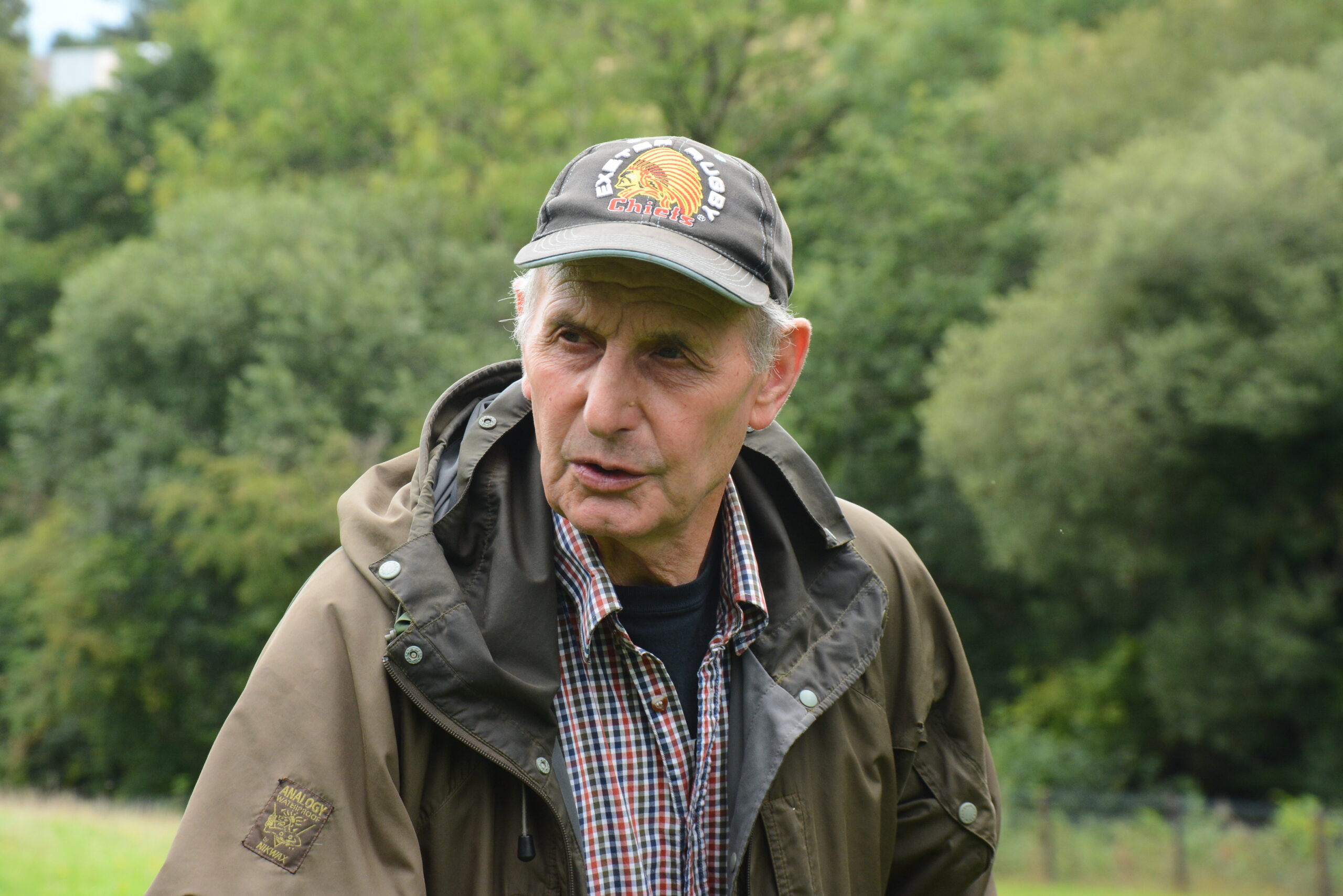
Above: Master Hedgelayer Ross Gray believes hedges should be seen as nature-friendly linear woodland, providing multiple benefits in the landscape.
Once the whips were planted, a thick layer of woodchip mulch was applied, some of which had been composted.
Throughout the first year the rows have been hand weeded. There was 99% first year survival despite the drought of spring and early summer 2022.
Deer are already excluded from the area, and grey squirrels are controlled. A stock proof fence along the hedge will protect it from browsing sheep. Horses in the field will inevitably browse some of the hedge plants as they grow taller, but with two rows of planting the hedge will prevail.
The main threat has been rabbits. As spiral guards have not been used, rabbits must be controlled. The few whips that have been lost to rabbits are being replaced.
As the hedge matures the two wild cherry and several others will be marked to allow them to grow on as future hedgerow trees.
The farmer of the adjoining field may trim the lower face from time to time, but the dense and diverse planting mix will ensure a mass of flowers, pollen, fruits, nuts and seeds higher up with shelter and nesting sites for birds and dormice within.
More Information
If you are interested in learning more about this project, please email us at rfshq@rfs.org.uk
Grants for Resilient Woodlands
Our Grants for Resilient Woodlands are funded by Train Hugger and Green The UK. They are open for applications from RFS and Royal Scottish Forestry Society (RSFS) members all year round.
These grants are to help people plant trees that will survive and thrive into the future. Creating better, more resilient treescapes for our environment, for people and for the economy.



